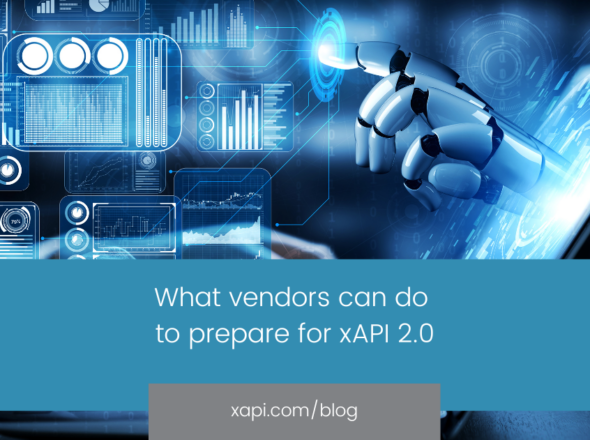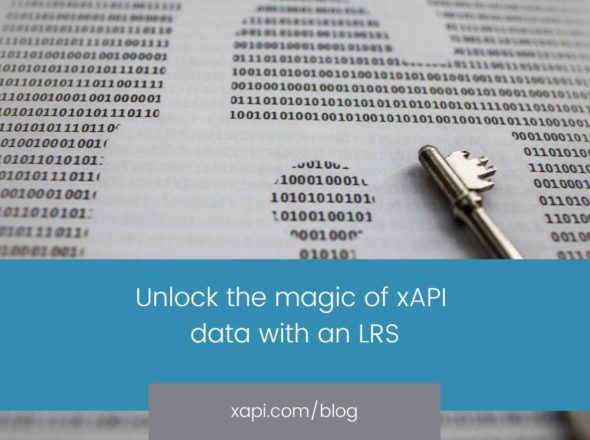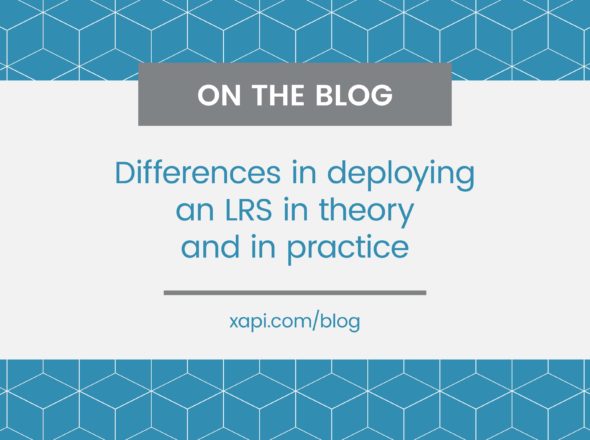
Photo by pernillarydmark
Sometimes we all get a little too focused on one slice of the world. Technology that helps people learn is no small slice, but it is just one segment of the systems a company uses to conduct business. If we’re going to make the best use of technology to help people learn in support of bigger organizational initiatives, we must look at the big picture of how all the systems are pieced together and how they create value for the company.
We talk a lot about the possibilities for xAPI to better collect evidence from experiences a person has, tying those back to real world performance to answer the question “How did the resources designed affect a person’s behavior?” That’s awesome; it’s a huge step. We can do study after study that will revolutionize what we’re calling training, where it goes, when it happens and how informal learning fills in design gaps. We can gather this information and use it to directly affect business results. That’s shiny. Everyone will love that. You are really helping people bridge knowledge gaps to accomplish the things that they need to.
There are other systems that can benefit from this data.
Human resource information systems (HRIS) and talent management systems have a lot to gain. HRISs typically take care of some minutia, like payroll and time cards, but they do much more than that in terms of human capital management. These are the tools people use when they need to find just the right person to take on a new obstacle, especially in a large enterprise. They are the critical part of making hiring, firing, promotion, and discipline decisions. These systems need to be privy to what a person has accomplished, gained competencies in, and aspires to do.
Finding the right people and retaining them is critical to every business. When the human resource system only sees a part of what a person is capable of they can’t make very informed, let alone meaningful or strategic decisions about how to help the people in the organization become happier or more effective.
Sure, right now such systems may have assessment results, course completions and the like. Such a limited way of describing what someone knows or does provides a fuzzy, partial picture of an individual. All of the tools implemented to help people learn through various mechanisms, get just in time support, and learn from one another need to be able to talk to the HRIS, too.
If you look at xAPI as a mechanism for this communication, it’s a big win.
Let’s look at something many in the corporate world can relate to. If an advertising agency wins a project to do a web campaign and have traditionally only done print work, they will likely ask HR to find a web designer for the project. The recruiter or a member of the HR team, may start at the HRIS looking to see if they have anyone on staff who has web design skills. They have a ton of print designers, but they don’t have any data to tell them what those designers know outside of their day job, as a hobby or freelance. Susan may be a great web designer and spend all of her down time during the day learning more about web design. She has spoken to colleagues in the agency about it, but has never had the opportunity to use those skills at her job. The conversations with colleagues are somewhat invisible to the HR system. Which makes the skills somewhat invisible to HR. Many HR groups are somewhat isolated from the ground level, which makes it hard for them to know much about the talent their people actually possess beyond the data they have (reviews, resumes, job descriptions, etc.) The recruiter may be lead to believe that they need to hire externally because they don’t have anyone on staff with the right skills. If they had data about what Susan learned outside of her formal job role and could see she is aspiring to web design, there’s potential to save a lot of money and time (make Susan happier, as well.)
Having access to that kind of information about people in the organization, whether she took a formal class or bookmarked some how-tos that she found useful, those types of experiences communicated to the HR system would save signifcant time and money in recruiting, hiring, and on-boarding. This also helps with retention. Susan may decide to leave when she sees someone hired over the top of her to do the thing she wants to do because her true value is not understood. This is a better way for the organization to serve the people that are part of it.
Having this granular data about more formative learning experiences, shared to and used by many systems is how informed decisions can be made. As we look at the bigger architecture of systems, learning technology and HR technology are closely related, but there are a lot more systems that we should look at (in another post, of course.)


